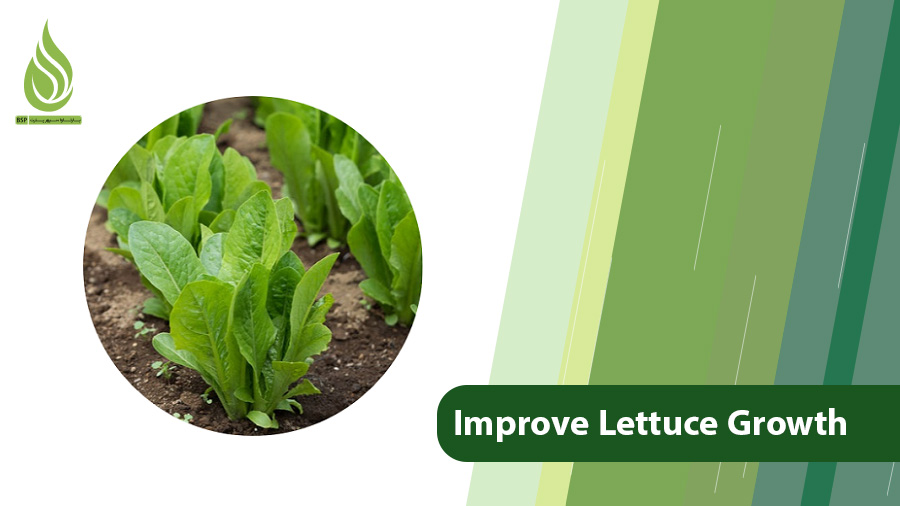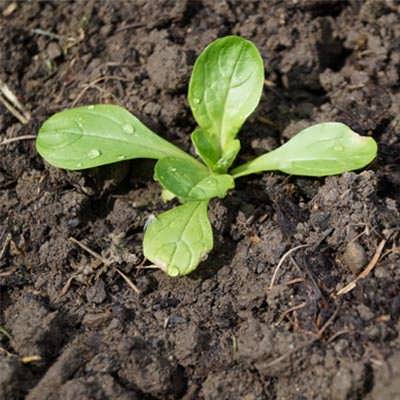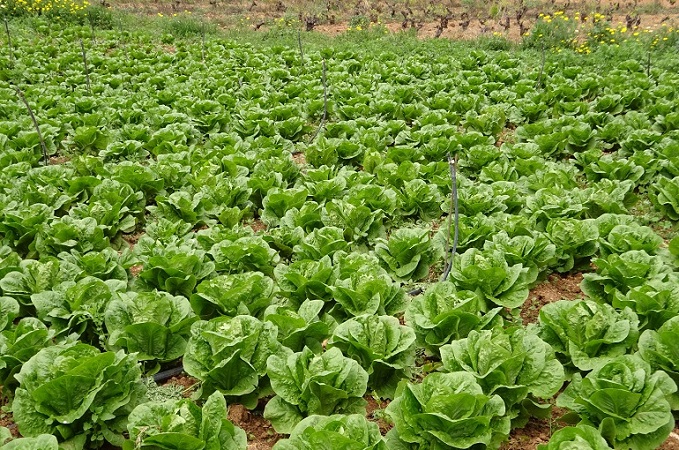
The Guide to Fertilizing and How to Improve Lettuce Growth
Lettuce is a nutritious and popular vegetable that many people include in their diets. To grow high-quality and tasty lettuce, we need to pay special attention to the plant’s nutritional needs. Proper nutrition not only affects the optimal growth of the lettuce but also contributes to the health and quality of the final product. Additionally, providing the right fertilizers strengthens the root system and helps the plant resist diseases and pests. In this article, we will introduce the best fertilizers to improve lettuce growth.
What nutrients are needed to improve lettuce growth?
Lettuce needs a variety of nutrients for optimal growth and development:
- Nitrogen: This is one of the main nutrients for lettuce growth, especially important in the early stages. Nitrogen plays a critical role in producing chlorophyll and proteins. When there is enough nitrogen, the leaves grow more and have a better color. However, a lack of nitrogen can cause the leaves to turn yellow and reduce the quality of the crop.
- Phosphorus: Phosphorus is essential for root development and the plant’s metabolic processes. It helps the roots grow well in the early stages of lettuce growth. Strong, healthy roots allow the plant to absorb water and nutrients more effectively. Phosphorus also aids in energy production within the plant, influencing the taste and quality of the leaves.
- Potassium: Potassium is important for regulating water and moisture in the plant. It strengthens the plant’s defense system against diseases and environmental stress. This nutrient helps improve the taste and quality of lettuce, increasing the plant’s resistance to unfavorable conditions. Potassium also helps maintain the crispness and structure of the lettuce leaves.
- Calcium: Calcium is vital for the plant’s cell structure and strength. It helps prevent issues like tip burn and soft leaves. Additionally, calcium improves the absorption of other nutrients.
- Magnesium: Magnesium is a key element in the process of photosynthesis. It helps the plant absorb light and produce energy. A deficiency in magnesium can lead to yellowing of the leaves and reduced growth.
- Iron: Iron is essential for chlorophyll production and the photosynthesis process. Alkaline soils often lack iron, so if the soil is alkaline, the plant may need additional iron. Providing enough iron is crucial for the color and quality of the leaves. A lack of iron can cause yellowing and stunted growth in the plant.

The Best Fertilizers to Improve Lettuce Growth: Based on Soil Type
Choosing the right fertilizer to improve lettuce growth depends on the type of soil and the plant’s nutritional needs.
- Sandy Soils: Sandy soils have excellent drainage but often lose nutrients quickly due to soil leaching, leaving them low in essential elements. For this type of soil, the best options are nitrogen fertilizers (like ammonium sulfate) and organic fertilizers. Nitrogen fertilizers, such as compost or well-rotted manure, dissolve quickly in the soil and help lettuce grow rapidly.
- Clay Soils: Clay soils are rich in nutrients but have poor drainage. In these soils, it is recommended to use balanced NPK fertilizers, which contain nitrogen, phosphorus, and potassium. NPK fertilizers support the growth of roots and leaves. Additionally, calcium fertilizers can improve drainage and soil structure, preventing problems like root rot. Therefore, calcium fertilizers are also suitable for clay soils.
- Loamy Soils: Loamy soil is considered the best type for growing lettuce. It is a mix of clay and sandy soil. For loamy soil, organic fertilizers like manure or compost can be used. These fertilizers help retain moisture and nutrients in the soil. Using balanced NPK fertilizers in this type of soil is also effective.
Why is Nitrogen Important to Improve Lettuce Growth?
Nitrogen is a key nutrient for plants and plays a very important role in the growth and development of lettuce. Let’s look at how nitrogen affects lettuce growth:
Nitrogen is a major component of proteins and enzymes and serves as a building block for chlorophyll. Chlorophyll is essential for photosynthesis, the process that helps plants convert sunlight into energy. This energy is crucial for promoting lettuce growth.
Nitrogen is especially important in the early stages of lettuce growth. Having enough nitrogen leads to the production of healthy, green leaves. More leaves increase the plant’s ability to capture sunlight, resulting in better photosynthesis. This process speeds up the growth of lettuce plants and improves the quality of the crop.
Not only does nitrogen help with quick growth, but it also affects the quality of the lettuce. Lettuce that receives sufficient nitrogen tends to be crisper and tastier. Additionally, nitrogen helps maintain the bright green color and appealing appearance of the lettuce, making it more marketable.
There are various nitrogen fertilizers that can support lettuce nutrition. One of the best nitrogen fertilizers is ammonium sulfate. This fertilizer is beneficial not only for vegetables like lettuce but also for improving the yields of corn and other grains.
To achieve the best results, the timing and amount of nitrogen application are very important. Nitrogen fertilizers should be used regularly and in appropriate amounts during the early growth stages of the plant. Farmers often apply nitrogen fertilizer to the soil during land preparation, before planting.

Timing and Methods of Fertilization to Improve Lettuce Growth
Fertilization Timing
- Initial Fertilization: The best time for initial fertilization is before planting or at the time of planting. This helps provide the nutrients needed for the early growth of the plant.
- Fertilization During Growth Stages: For lettuce, fertilization can be done at different growth stages, especially during the rapid growth phase (about 2 to 4 weeks after planting). This timing usually supports quick growth and better nutrient absorption.
- Fertilization in Suitable Weather Conditions: Avoid fertilizing on rainy or stormy days. The best times for fertilization are early in the morning or early in the evening when the temperature and soil moisture are appropriate.
Effective Fertilization Methods
- Surface Application: Surface fertilization involves spreading fertilizer evenly over the soil surface. This method works well for both mineral and organic fertilizers and allows them to penetrate the soil effectively.
- Deep Application: This method involves placing fertilizer deeper in the soil, close to the roots. It helps improve nutrient absorption and can prevent evaporation and leaching of the fertilizer. Deep application is often used for trees.
- Fertigation: Liquid fertilizers can be applied to the soil through irrigation. This method helps distribute nutrients more evenly in the soil.
- Foliar Spraying: In this method, fertilizer is sprayed as a solution on the leaves. This can aid in the quick absorption of nutrients.
The choice of fertilization method for lettuce depends on the type of fertilizer and the soil type. Solid fertilizers, like crystalline ammonium sulfate, are typically applied to lettuce and vegetable fields using surface application. However, if you have a liquid fertilizer, you should use foliar spraying or fertigation for application.

Amount and Type of Fertilizer
Fertilizing helps boost the growth of lettuce and other vegetables, but it’s important to follow a proper plan to avoid harming the plants. Fertilization is only beneficial when the plant actually needs those nutrients. Over-fertilizing can lead to plant and soil toxicity.
To determine what the plant needs, soil testing should be done first. This involves collecting samples from different areas of the field and analyzing them in a laboratory. The test results will show the soil’s nutrient needs, and based on this information, a fertilization plan can be created.
The Importance of Soil pH and Its Impact on Nutrient Absorption
Soil pH is a key factor in farming and gardening that directly affects how well plants absorb nutrients. pH measures the acidity or alkalinity of the soil and is rated on a scale from 0 to 14. In suitable pH ranges, nitrogen and other nutrients are absorbed more effectively. Soils with a pH lower than 7 are considered acidic, while those with a pH higher than 7 are alkaline. Soils with a pH between 6 and 7 provide the best conditions for lettuce growth.
Adjusting soil pH is crucial for maximizing nutrient absorption and promoting healthy plant growth. Maintaining the pH within the optimal range can enhance productivity and decrease the reliance on fertilizers. To increase pH and reduce soil acidity, lime can be applied. On the other hand, to decrease pH and increase soil acidity, sulfur fertilizers like ammonium sulfate are effective. High-quality crystalline ammonium sulfate is available from Barsava Sepehr, which is ready to serve customers in Iran and around the globe. Hope this helps you improve your lettuce growth.